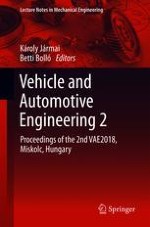2018 | OriginalPaper | Buchkapitel
Correlation Between Process Parameters and Cutting Forces in the Face Milling of Steel
verfasst von : János Kundrák, Angelos P. Markopoulos, Tamás Makkai, Nikolaos E. Karkalos
Erschienen in: Vehicle and Automotive Engineering 2
Aktivieren Sie unsere intelligente Suche, um passende Fachinhalte oder Patente zu finden.
Wählen Sie Textabschnitte aus um mit Künstlicher Intelligenz passenden Patente zu finden. powered by
Markieren Sie Textabschnitte, um KI-gestützt weitere passende Inhalte zu finden. powered by
